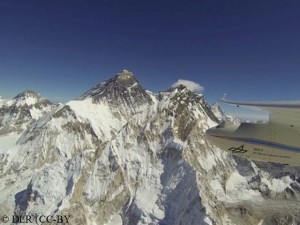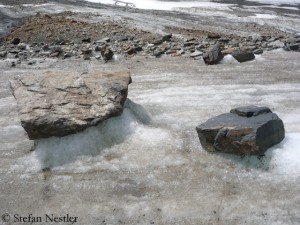Well under drugs is half way up?
 Mountaineering is a sport. And there is – as in other sports – doping. Not the fact is surprising but the extent. “It is common practice,” German Professor Thomas Kuepper tells me. The occupational health and sport physician is working at the University Hospital Aachen. He was one of the authors of the report “Drug use and misuse in mountaineering”, which has been discussed at the General Assembly of the World Federation of Mountaineering and Climbing (UIAA) last week in Flaggstaff in the United States. Kuepper refers to an own study on Kilimanjaro: 80 percent of the summit aspirants used Diamox or Dexamethasone.
Mountaineering is a sport. And there is – as in other sports – doping. Not the fact is surprising but the extent. “It is common practice,” German Professor Thomas Kuepper tells me. The occupational health and sport physician is working at the University Hospital Aachen. He was one of the authors of the report “Drug use and misuse in mountaineering”, which has been discussed at the General Assembly of the World Federation of Mountaineering and Climbing (UIAA) last week in Flaggstaff in the United States. Kuepper refers to an own study on Kilimanjaro: 80 percent of the summit aspirants used Diamox or Dexamethasone.
![]() read more
read more
Motorised glider over Everest
Science and adventure are often not far apart. With a motorised glider and a 3-D camera on board scientists of the German Aerospace Center (DLR) and pilots of the “Mountain Wave Project” have explored Mount Everest a week ago. “The conditions were ideal, despite the wind speeds at the summit of Everest, which neared 100 kilometres per hour,” said pilot Klaus Ohlmann. “The almost turbulence-free slope updrafts helped us ascend quickly.” Ohlmann and his co-pilot Jona Keimer started in Pokhara in the Annapurna region and needed one and a half hour to reach the highest mountain in the world. With the images of the special camera a precise 3-D model of the region around Mount Everest will be produced, in which, according to DLR, even small objects of only 15 centimeters size are visible. The model shall be useful for disaster protection and rescue operations. The video of the DLR awakens wanderlust. Check it out for yourself:
More than 600 glaciers have already disappeared
Better safe than sorry, this also applies for public relations. Three years ago the IPCC slipped on the ice of the Himalayan glaciers. In its last report on climate change that was published in 2007 it was predicted that all Himalayan glaciers would have disappeared until 2035. In 2010 the IPCC had to concede tranposed digits, the right year in the prediction should have been 2350. There was a flood of criticism. No wonder that in the summary of the new climate report the word “Himalaya” is missing. The IPCC only announced that “over the last two decades (…) glaciers have continued to shrink almost worldwide”. Also in the full report, which is more than 2,000 pages long, the IPCC is only making cautious predictions for the Himalayas.
![]() read more
read more
Highest mountain of Sweden is melting away
Unless a climatic miracle happens, Sweden’s highest peak will soon be only the number two in the country. Scientists of the University of Stockholm measured that in August the South Summit of Kebnekaise in Lapland was only 2099 meters high, which is a record low. The summit is covered by a small glacier. In the past 18 years this ice cap has melted by about a meter per year on average. “It’s a clear trend”, says geographer Gunhild Rosqvist. Climate change was to blame: “There is no doubt that the melting process is caused by the warmer weather.”
![]() read more
read more












Feedback